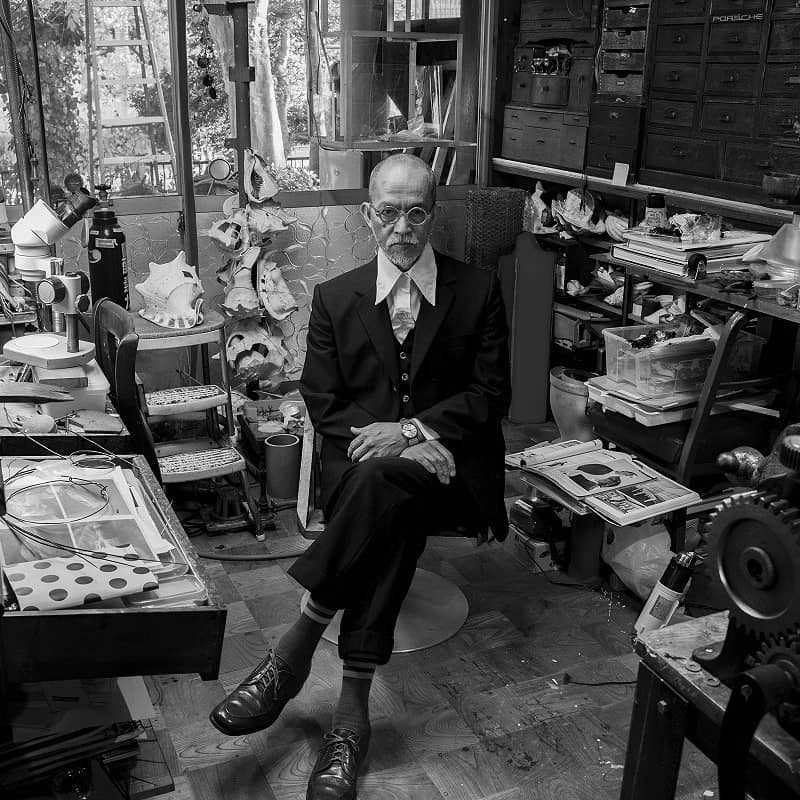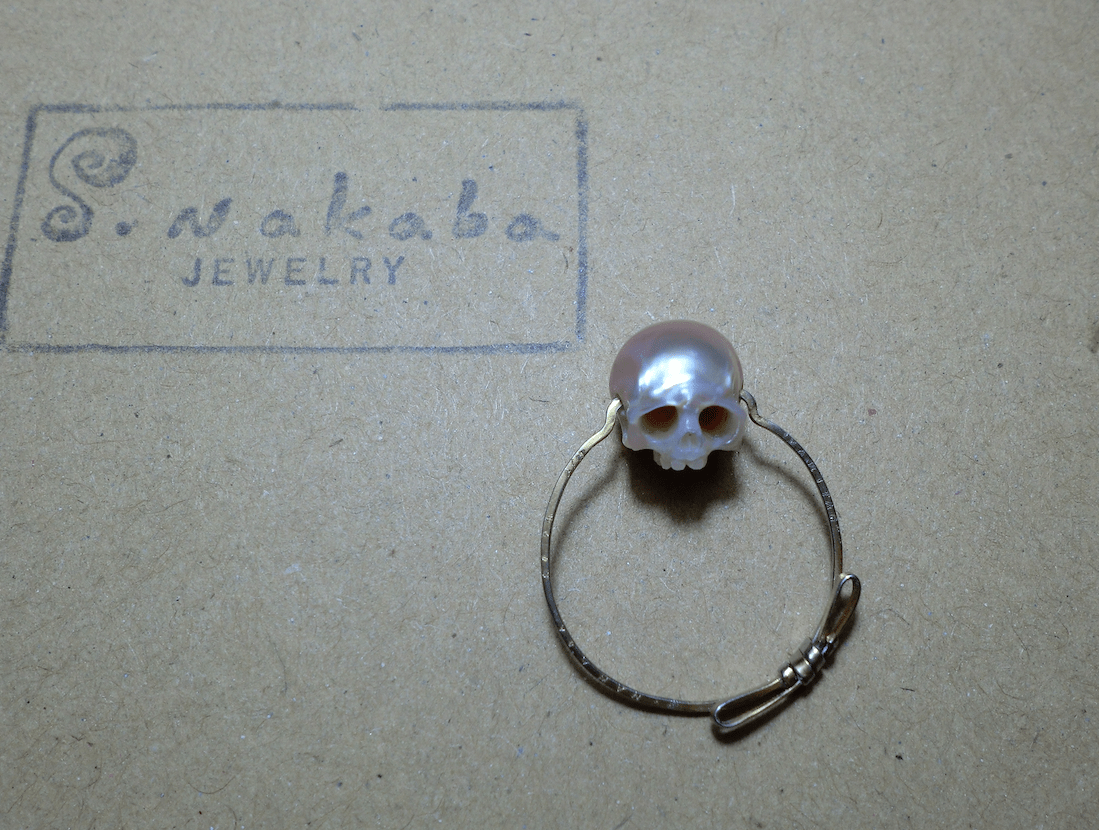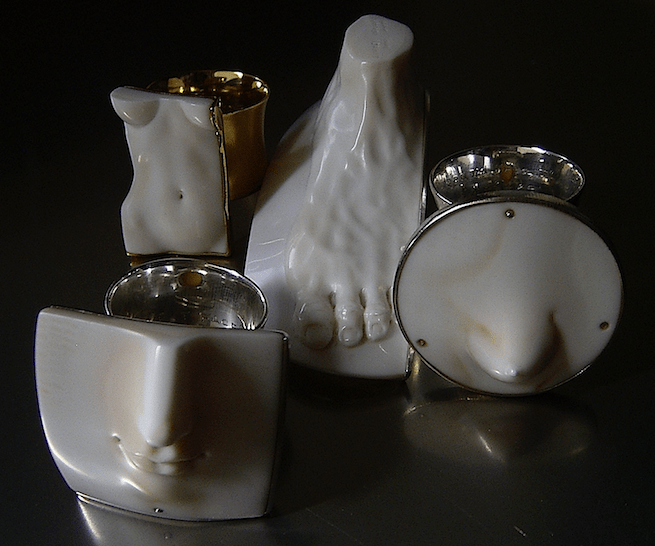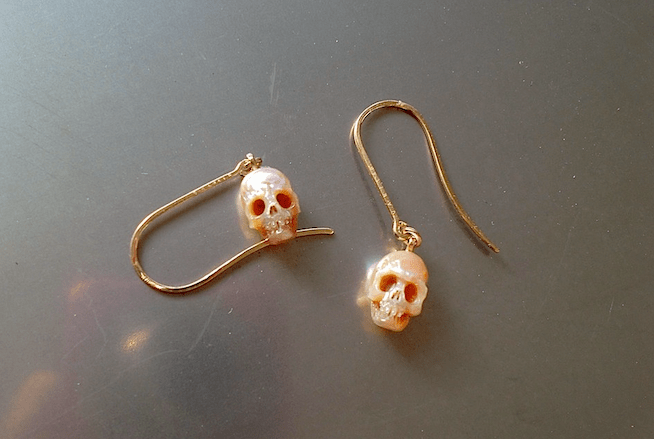We chat with jewelry designer Shinji Nakaba about his beautiful “fairy skulls,” which are intricately carved from tiny pearls, and the inspiration behind his innovative work.
The Kanagawa-born artist always aspired to create something unique, and in his early twenties he tried everything from dressmaking to hairstyling to try and fulfill this desire. But when Shinji Nakaba was introduced to jewelry making in 1974, he finally found his medium.
The self-taught designer and self-proclaimed rebel has since created a manifold collection of jewelry made from a range of materials such as aluminum, gold and even plastic bottles. His main focus is on revolutionizing glyptic art, the ancient tradition of engraving. And, as with the pearl skulls, his pieces often reflect a kind of modern vanitas, portraying the dark beauty that lies in decay.

Jewelry designer Shinji Nakaba
Why did you choose jewelry?
Simply put, I can do it the best. It’s not that I am set on jewelry. It just met my capabilities. My mother ran a dressmaking shop, so I would see beautifully dressed women all the time. I remember dreaming of being a fashion designer, an artist, and so on. But paintings don’t sell for too much. In the end, it was after I had experienced them all that I came to feel this way.
You work with everything from trash cans to precious pearls. Any reason for the contrast?
I’ve always loved both precious jewels and useless gadgets. In the 90s, I started using trash, metal, and aluminum for jewelry; I started to realize a fresh kind of beauty for jewelry could only be created by using materials equally, regardless of their value. You can create so much beauty with things that are thought to be useless. I’m always thinking that I might be the last person in the world to see something like this. I feel quite excited by the thought.
When designing, do you only have the piece in mind or do you think of the person wearing it?
It’s not a matter of imagining the piece or the person; my motivation for creating something comes from what I feel is innovative, and what I can’t help myself from being over curious about. It might be self-centered to think that there must be others in this enormous world who would want the same things as me. But extreme egoism might just be the way to contribute to something or someone.
Your designs include skulls, snakes and body parts. What is your fascination with the dark and obscure?
Many say that contemporary art is hard to understand when you don’t have prior input, but considering my work, you could say that anyone – with or without the input – can understand it. I also just find it interesting. Carving body parts is intriguing; it’s challenging to bring out the texture and curves of the skin. Figurative sculpture has lost popularity in the age of modernism, but I feel like there’s still a spark left for it. It’s very motivating to see people enjoying my skull designs, when they actually weren’t fond of skulls before.
Your pearl skulls are a global favorite, and even made it to the 2016 Oscars, with Mad Max: Fury Road makeup artist Lesley Vanderwalt wearing a set. Are they a favorite for you too?
I do have special feelings for the pearl skulls. I’ve always liked using baroque pearls [pearls that aren’t perfectly round, but a little crooked], but I was never able to successfully carve them. Everyone involved in working with pearls believed it couldn’t be done. But then I tried carving one specific type and managed to carve to the center without anything peeling off. I look back and I find it incredible that I’m carving people’s faces or skulls from pearls. The moment you think you’ve mastered art is the end.
Shinji Nakaba’s pieces can be purchased online at s-nakaba.shop-pro.jp and at the shop House @ Mikirihassin (5-42-1 Jingumae, Shibuya-ku).



All photos courtesy of Shinji Nakaba
Updated On April 26, 2021









